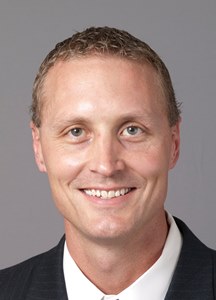By Rick Vacek
GCU News Bureau
One number sums up what’s happening at Abilene Christian University these days.
Thirty.
As in 30 million.
Dollars.
That’s not a grand total from hundreds or even thousands of donors. That’s one gift. Thirty mil. Three-oh.
It came from April and Mark Anthony, who both graduated from ACU in the late 1980s and made their fortune in the home health care field, and half of the money will go toward construction of an on-campus football stadium, Anthony Field at Wildcat Stadium. The rest of the breakdown is $7 million to the College of Business Administration, from which they both graduated, $5 million for a new science building and $3 million in undesignated funds.
The university also is building – and also through donations – a new stadium for track and field and soccer.
“We should be positioned pretty well for the foreseeable future,” said Jared Mosley, the university’s director of athletics. ACU bills itself as the “premier university for the education of Christ-centered, global leaders” and prides itself on its academic environment. “I’ve shared this with different alumni groups: Students are choosing ACU for the experience they’ll get over four years,” Mosley said.
Here’s a closer look at university life in west Texas circa 2014:
Location, location, location
Abilene, Texas (population 118,000), is about 150 miles west of Fort Worth and right in the middle of the hotbed of high school football. Think “Friday Night Lights.” There are two smaller colleges in town, Hardin-Simmons University and McMurry University, that both play football, but they’re not ACU’s main competition for attention. If you were to ask someone in town when Abilene plays next, they probably would think you’re talking about Abilene High, not Abilene Christian. “High school football is hard to crack into,” said Lance Fleming, associate director of athletics for media relations.
History lesson
The university was Childers Classical Institute and had all of 25 students when it was founded in 1906. The name formally was changed to Abilene Christian College in 1920 and then to Abilene Christian University in 1976.
Campus life
The private university has 4,461 students, about half of whom live on campus. Freshmen and sophomores must either live on campus or at home.
Conference
ACU was in the Southland Conference from its inception in 1963 to 1973, then rejoined last year when it went D-I. All 13 schools – including another D-I transition school, University of the Incarnate Word – are in Texas, Arkansas and Louisiana.
Former students of note
Bobby Morrow, who won three gold medals in track and field in the 1956 Summer Olympics, and Wilbert Montgomery, a star running back for the Philadelphia Eagles in the 1980s, are the two athletes who accomplished the most.
Then there’s Randall “Tex” Cobb, who accomplished something impressive in his own way by staying on his feet for 15 rounds while getting brutally pummeled by heavyweight boxing champion Larry Holmes in 1982 – the fight that led broadcaster Howard Cosell to end his long association with the sport.
Cobb used his newfound fame to demonstrate his sense of humor and launch a successful acting career.
When asked about reports that he tried to talk to Holmes between punches, he said, “If I wanted to communicate with Larry during the fight, I would have had to send him a letter. Every time I wanted to say something I found it hard speaking because he kept putting his left hand in my mouth.”
He said of Cosell announcing his retirement from ringside analysis because of that fight, “I can do my sport no greater service than this,” and “I’ll go another 15 rounds with Holmes if Howard will quit announcing football.”
Also of note is Clint Longley, the backup quarterback who famously rallied the Dallas Cowboys to an improbable Thanksgiving Day victory in 1974, got in a locker-room fight with starting QB Roger Staubach in 1976, was out of the game less than a year later and has stayed out of the public eye ever since.
Fleming said he gets calls from reporters about Longley every Thanksgiving, but he has no idea where Longley is.
D-I effect on athletic facilities
ACU officials announced on Valentine’s Day this year their plan to build two on-campus stadiums, one for football by 2016 and one for track and field and soccer by next year. The university has been playing its home football games at a high school stadium three miles from campus since 1959.
The new stadium will be on the site of Elmer Gray Stadium, which has been host to the U.S. Olympic Trials in 1960, NAIA championships and NCAA Division II championships. Both stadiums are funded by donations.
Newsy number
Abilene Christian has been a traditional power in track and field. Its 54 national titles (mostly in Division II) are the most in one sport by one school.
Fun fact
Abilene has been playing football since 1910, and 46 of its players have gone on to the NFL. One of them, safety Justin Lucas, played for the Arizona Cardinals from 1999 to 2003.
ABOUT THIS SERIES:
Part 1: GCU came up a winner in Year 1 of D-I. Sidebar: Nebraska Omaha.
Part 2: How three veteran coaches approached and managed the first year. Sidebar: University of the Incarnate Word.
Part 3: Antelope athletes talk about what it took to move up to D-I from D-II. Sidebar: Abilene Christian University.
Part 4: GCU isn't the only university trying to establish itself in a competitive sports market. Sidebar: University of Massachusetts Lowell.
Part 5: Changes and challenges often mark the second year of the D-I transition. Sidebar: Northern Kentucky University.
Contact Rick Vacek at 602.639.8203 or [email protected].

















